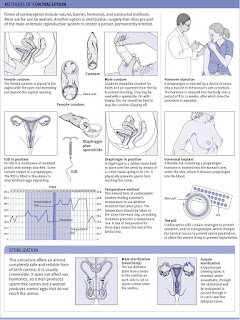The Cornea - The transparent, thin-walled surface that forms the front of the eyeball. The cornea has two main functions. It helps to focus light rays on to the retina at the back of the eye, and protects the front of the eye from debris and injury.
The cornea is joined at its circumference to the sclera (white of the eye); the black pupil and the coloured iris are visible beneath it. There are five layers. The outermost layer (the epithelium) protects the eye and absorbs oxygen and nutrients from tears. The central layer (the stroma) is by far the thickest and gives the cornea its form.The inner layer (the endothelium) expels excess fluid from the cornea, thus keeping the tissues transparent.
For the cornea to stay healthy, it must be kept moist and clean. It is kept moist by a film of tears, which are produced by the lacrimal gland and by the mucusand fluid-secreting cells in the eyelids and conjunctiva. Further protection is provided by the eyelids, which blink or close to keep out debris. In addition,
the cornea is very sensitive, and immediately registers the presence of any injury or foreign body.
DISORDERS OF THE CORNEA:
Various injuries or conditions can affect the sensitive cornea.
Injury:
A corneal abrasion (scratch) can become infected and progress to a corneal ulcer. Penetrating corneal injuries can cause scarring, which may lead to impairment of vision. Chemical injuries can result from contact with a corrosive substance such as an acid or alkali. In actinic keratopathy, the outer layer of the cornea is damaged by ultraviolet light. In exposure keratopathy, damage occurs as a result of reduced protection from the tear film and blink reflex.
Infection:
The cornea can be infected by viruses, bacteria, or fungi. Some infections can cause ulceration, the herpes simplex virus being especially dangerous.
Congenital defects:
Rare congenital defects include microcornea (a cornea that is smaller than normal) or megalocornea (one that is bigger than normal) and buphthalmos, or “ox-eye’’, in which the entire eyeball is distended as a result of glaucoma (raised fluid pressure in the eyeball).
Degeneration:
Degenerative conditions of the cornea include calcium deposition, thinning, and spontaneous ulceration. Such conditions occur mainly in elderly people, and are more common in previously damaged eyes.
Other disorders:
Other disorders include: keratomalacia, which may result from vitamin A deficiency; keratoconjunctivitis sicca (dry eye); corneal dystrophies, such as keratoconus, in which the cornea becomes thinner and cone-shaped; and oedema, in which fluid builds up inside the cornea and impairs vision.
Read More








